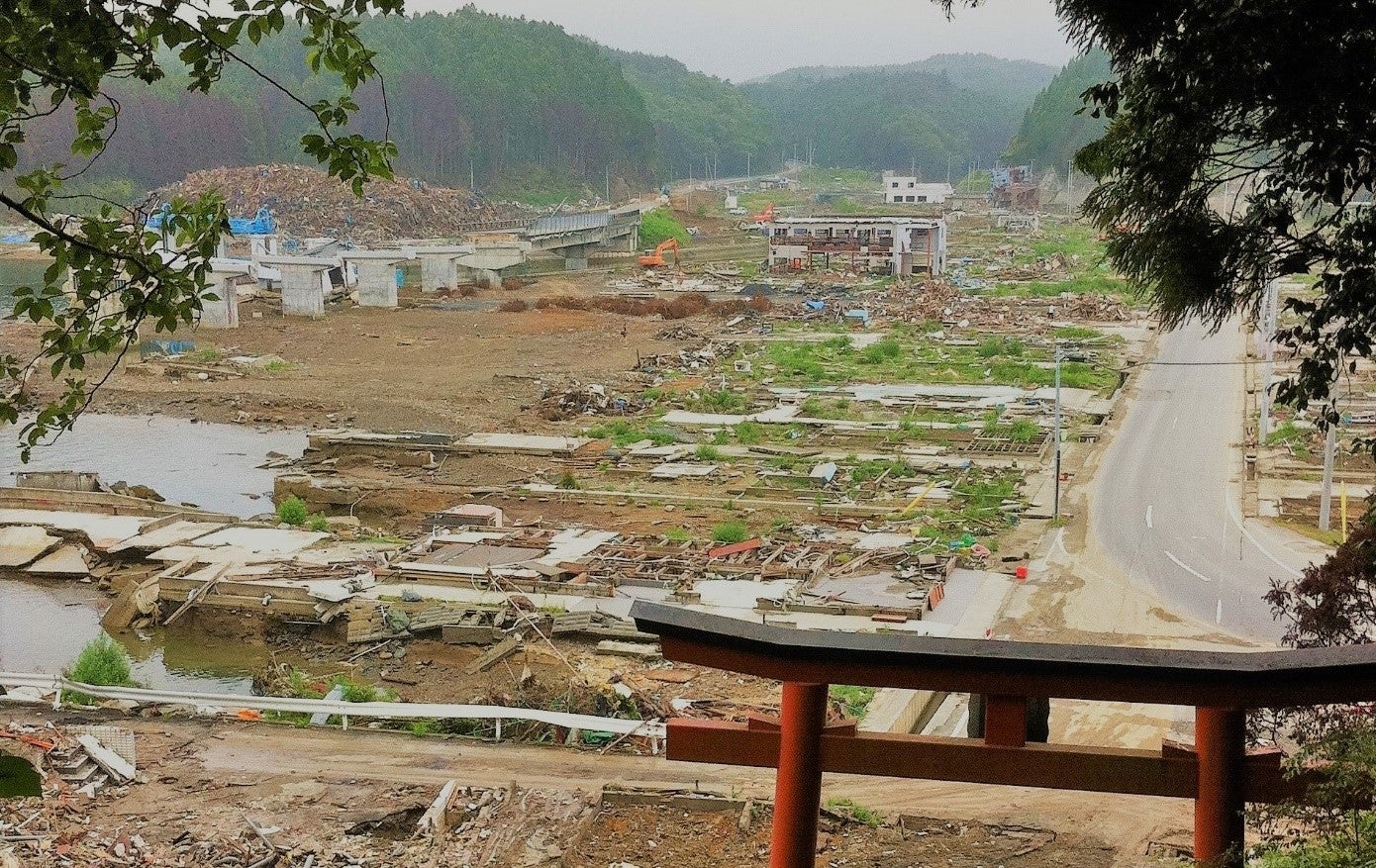 2011年8月、三嶋神社から宮城県南三陸町歌津地区を見下ろした風景(写真:竹本祥子)
2011年8月、三嶋神社から宮城県南三陸町歌津地区を見下ろした風景(写真:竹本祥子)
March 11, 2011 is a special day for many Japanese people.It is a day that we remember the jolting magnitude 9 earthquake that shook the nation, and the unbearable shock and sorrow of witnessing many lives, livelihoods, and entire towns swallowed by the tsunami. At the same time, it was a day that many of us made a promise that we would do whatever it takes to help avoid this kind of tragedy from happening again, anywhere in the world.
For many of us, it was the day we started our journey towards planting the seeds for resilience.
Today marks the 10-year anniversary of the Great East Japan Earthquake. The force of the earthquake sent a tsunami rushing towards the Tohoku coastline in eastern Japan, a black wall of water which wiped away entire towns and villages: 19,729 lives were lost and 2,559 people are still missing today. The earthquake and tsunami also contributed to an accident at the Fukushima Daiichi Nuclear Power Plant, requiring additional evacuations and affecting livelihoods.
new multifunctional market space constructed above the reconstructed seawalls.
Since the earthquake, the World Bank in partnership with the government of Japan, especially through the Japan-World Bank Program on Mainstreaming Disaster Risk Management in Developing Countries, has been working with Japanese and global partners to identify larger lessons for disaster risk management (DRM) that can be shared widely to help strengthen efforts to build resilience. In 2014, The World Bank published Learning from Megadisasters: Lessons from the Great East Japan Earthquake, which brought together dozens of experts ranging from seismic engineers to urban planners, who analyzed what happened on March 11, 2011 and the following days, months, and years; compiling lessons for other countries in 36 comprehensive Knowledge Notes.
Since then, the Japan-World Bank Program has furthered the work, continuing to gather, analyze and share the knowledge and lessons learned from the earthquake and past disasters, to enhance the resilience of next generation development investments around the world, focusing on resilient infrastructure, risk identification and reduction, and disaster risk finance and insurance.
Through synthesizing a decade of research, three key strategies have recurred across many of the cases we studied:
- the importance of planning for disasters before they strike;
- enhancing preparedness by sharing responsibilities among stakeholders including the public, private, and the community;
- continuously reviewing and updating policy and regulatory frameworks based on lessons learned.
For example, business continuity plans and pre-arranged agreements put financial and operational mechanisms and resources in place to respond to disruptions and resume the delivery of products and critical services. Additionally, these pre-arranged agreements among public and/or private organizations can help share essential responsibilities and information both before and after a disaster . This might include agreements with private firms to repair public infrastructures, among private firms to share the costs of mitigation infrastructure, or among municipalities to share rapid response teams and other resources.
The 10-year anniversary finds the world in the midst of the multiple emergencies of the global COVID-19 pandemic, natural hazards, and climate change. In particular, the earthquake highlighted the importance of planning and drove the message home that resilience is strengthened when it is shared. These principles can be brought to bear in the context of emergent climate, rapid urbanization, and public health crises.
With more frequent, extreme and unpredictable risks on the rise, neither governments nor the private sector alone have all the tools to prepare for and respond to disasters . By making disaster preparedness a key consideration for all organizations, and bringing diverse stakeholders together to make plans for when a crisis strikes, these strengthened networks and planning capacities have the potential to bear benefits not only in an emergency but in the everyday operations of organizations and countries. Our shared journey continues.
Related links:
Feature Story: Learning from Megadisasters: A Decade of Lessons from the Great East Japan Earthquake
Information by sector: http://pubdocs.worldbank.org/en/662541615452748768/lessons-from-great-east-japan-earthquake-drmhubtokyo.pdf
Subscribe to our Sustainable Cities newsletter
Follow @WBG_Cities on Twitter





Join the Conversation